
Two major French Rugby clubs in the Top 14 are currently trusting us to demonstrate the usefulness of digital assessment of players exposed to concussions and repeated mild traumatic brain injuries.
During the first couple ou months collaborating with Racing 92, we had the opportunity to get some insightful data about our tools in concussion assessment.
All the players had a pre season assessment with Synapse and Vision. Then in case of a concussion occurred, the digital assessments were repeated at 3 days (HIA3) then weekly until return to play was decided.
Overall findings
All the players had a pre season assessment.
Using our findings based on our cohort in presymptomatic neurological diseases, we were able to determine 5 parameters that were more frequently observed in presymptomatic individuals rather than healthy controls:
- Synchronization test: inter hand interval > 15ms
- Level test accelerometric measure > 0.0057G
- Go – No Go mean response latency > 733ms
- Presence of hypo or hypermetric horizontal pro saccades
- Presence of hypo or hypermetric vertical pro saccades
The presence of at least 2 out of 5 parameters allowed to detect pre symptomatic individuals with an accuracy of 82.9%.
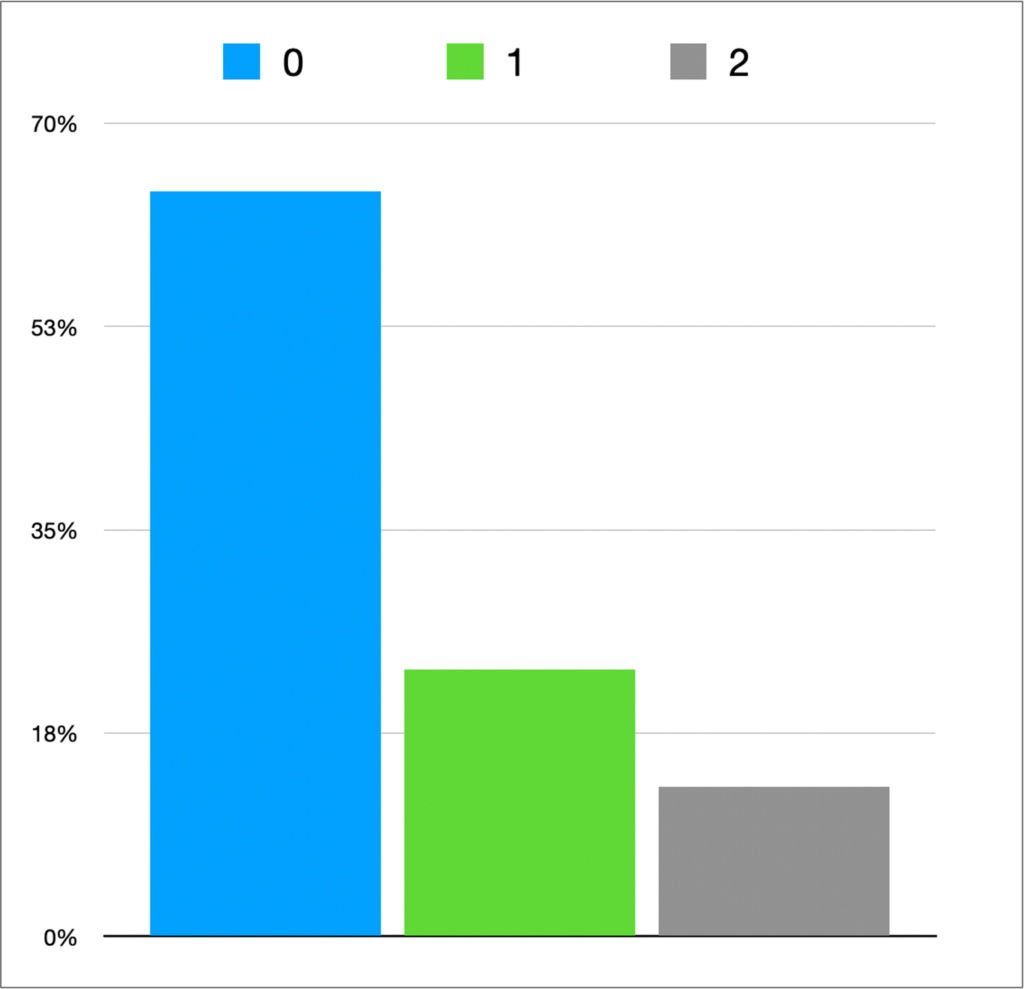
Number of abnormal parameters in players’ baseline evaluation
Applying this stratification, we found that 12.8% of players had digital performances that were worse than the usual values observed in healthy controls.
This result is in the same range in comparison with a previous study reporting that the risk of developing a neurodegenartive disease in former rugby players was estimated at 11.4% (Russell et al., JNNP 2017).

Number of abnormal parameters at baseline, HIA3 and follow-up
Eight players were exposed to concussions during our observation period.
All of the players had a baseline evaluation that was comparable to healthy controls. However, at the HIA3 evaluation, 50% presented a significant worsening of the digital assessment with at least 2 abnormal parameters.
Findings from digital video oculography
You can see here a example case of a player that was monitored using Vision and who suffered from two consecutive concussions. You can see how video oculography records revealed abnormalities that could not be detected with a traditional exam and allowed to monitor recovery.





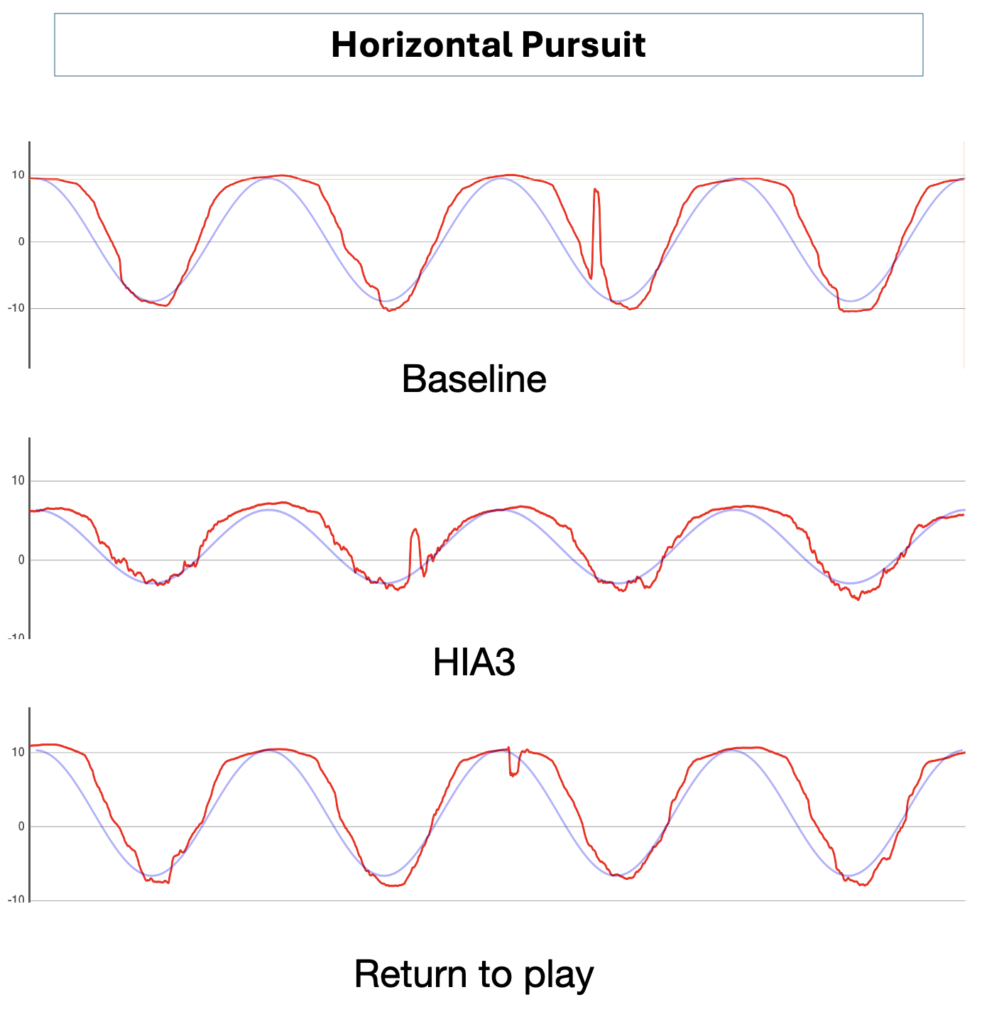
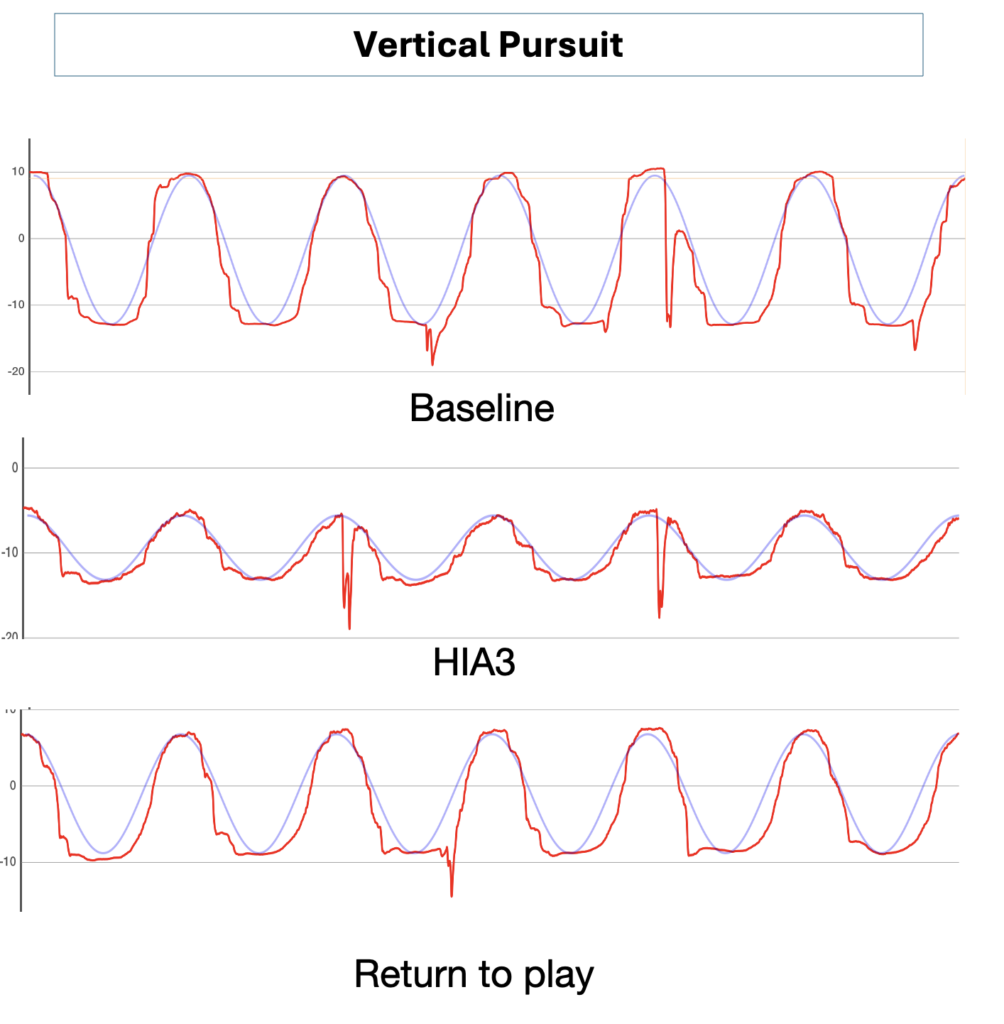
Here again you can see that smooth pursuit records had a decreased amplitude and saccadic aspect at the HIA3 then returned to baseline appearance. Note that the baseline vertical pursuit record was already abnormal, which can be observed, if isolated, even in healthy controls
You can see here additional samples of saccade records in players at baseline and HIA3.
Occurrence of hypometric pro saccades (both in vertical and horizontal paradigms) were one of the most often detected abnormalities

Example of pro saccades records at baseline and HIA3. Each line represent records performed on a same player
Findings from multidimensional neurological assessment
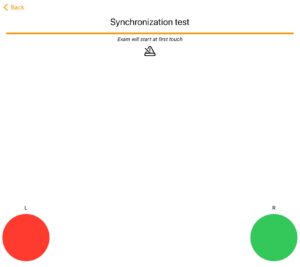
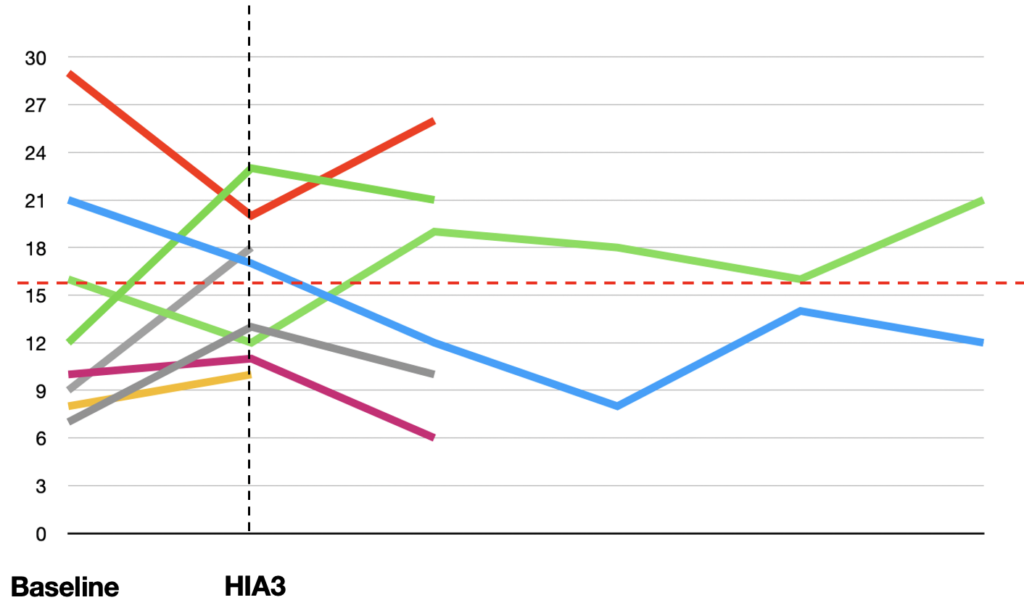
At the HIA 3 evaluation, 5/8 players had a worsening of the interhand interval. Two players (in gray and green) who had a value within the usual limits at baseline had a value above 15.5ms at HIA3. In several cases, when follow-up was available, the values tended to return closer to the baseline measure.
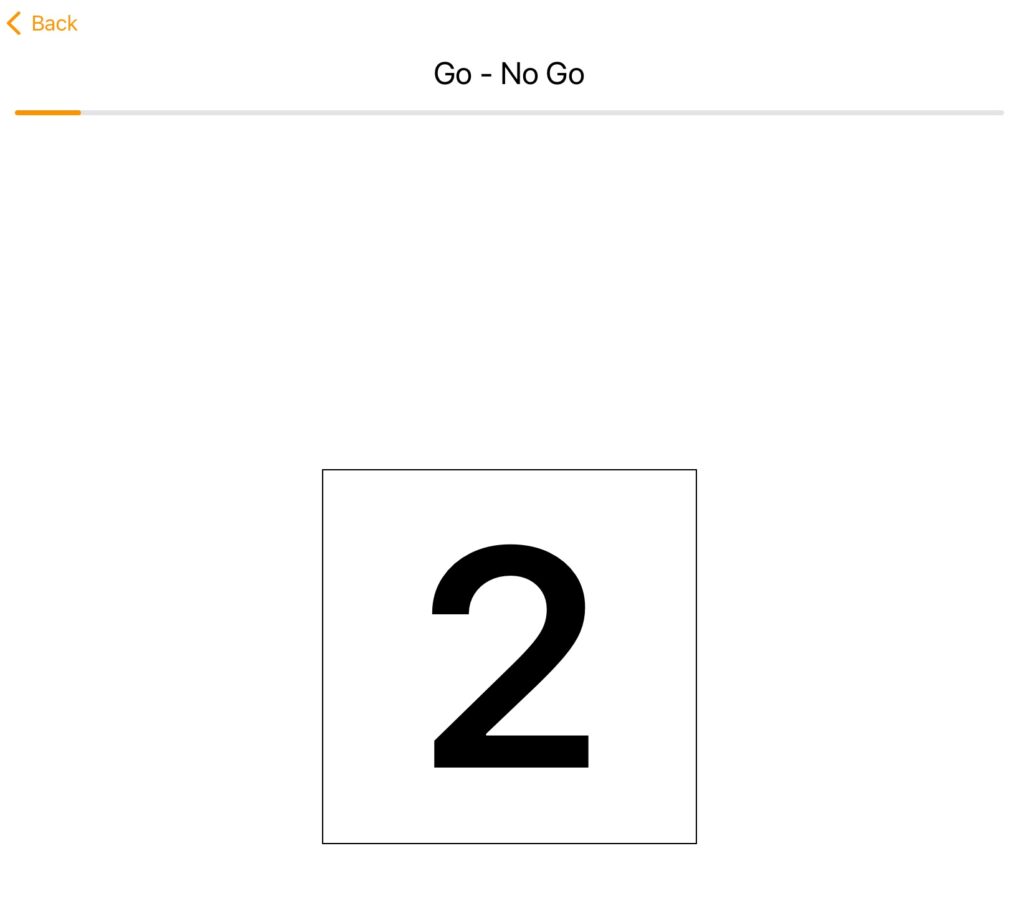
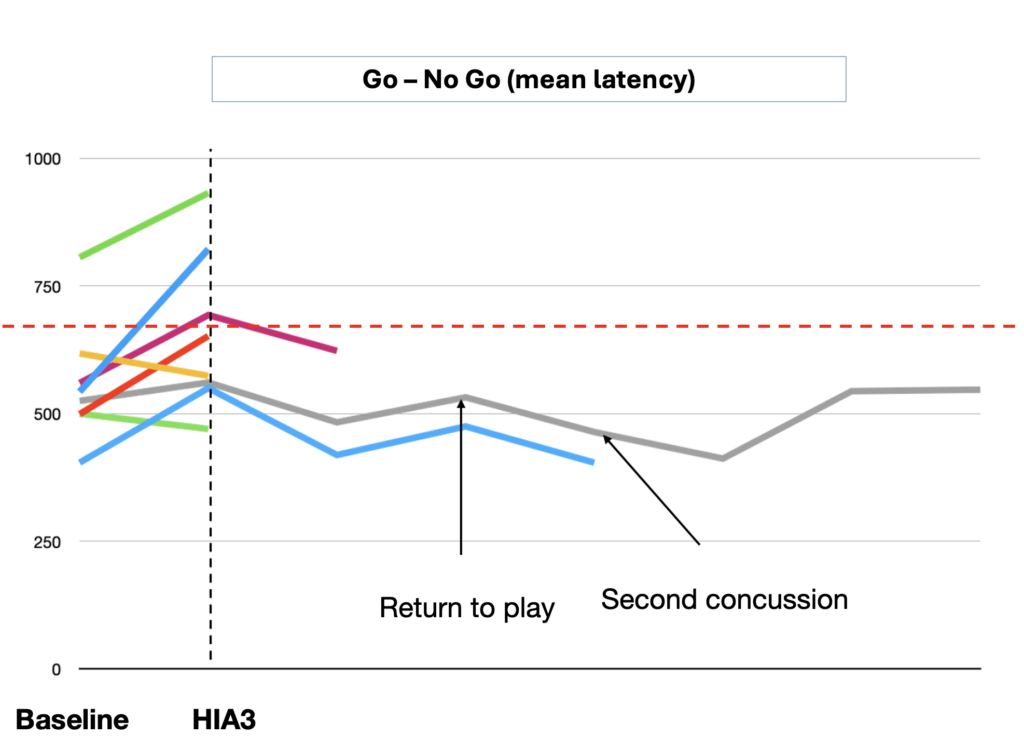
At the HIA 3 evaluation, 6/8 players had a worsening of the mean response latency. Two players (in blue and pink) who had a value within the usual limits at baseline had a value above 733ms at HIA3 and one player (in green) had a worse performance at HIA3 while already having a value outside the usual limits at baseline.
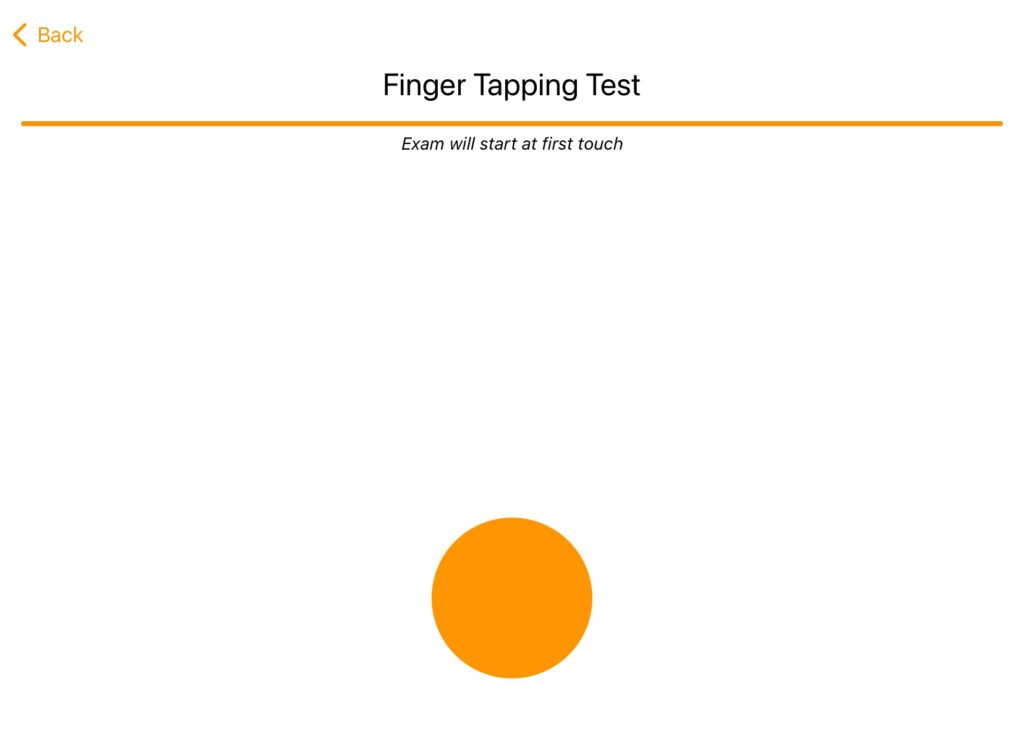
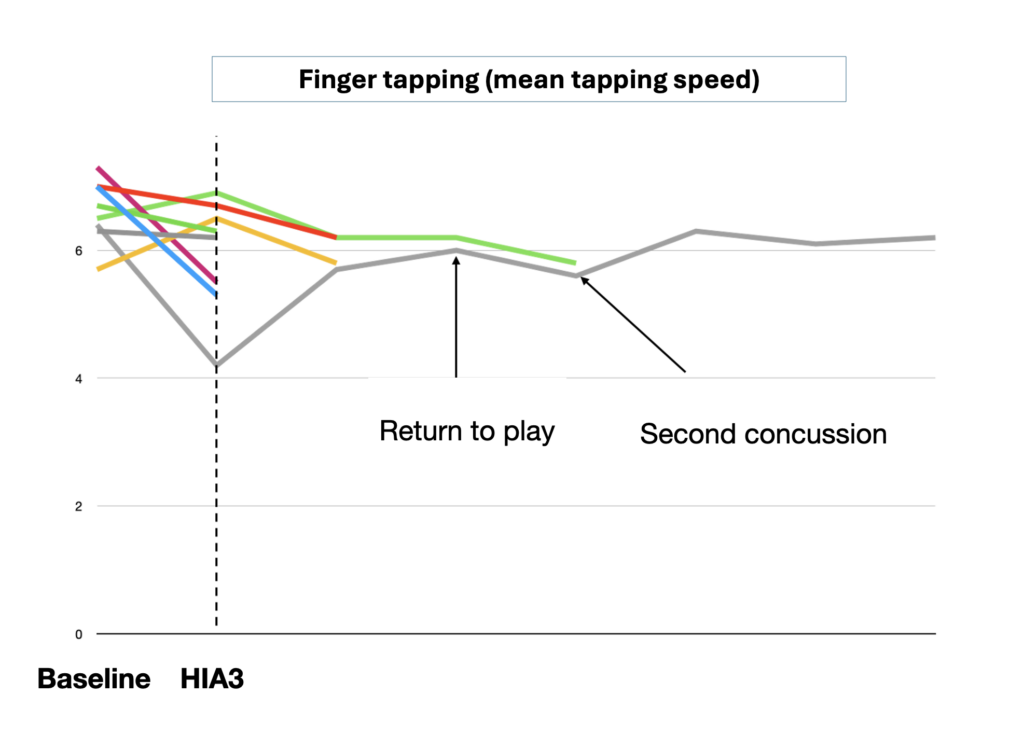
At the HIA 3 evaluation, 6/8 players had a worsening of the mean tapping speed. When follow-up was available, in many cases, the value tended to return closer to the baseline value




